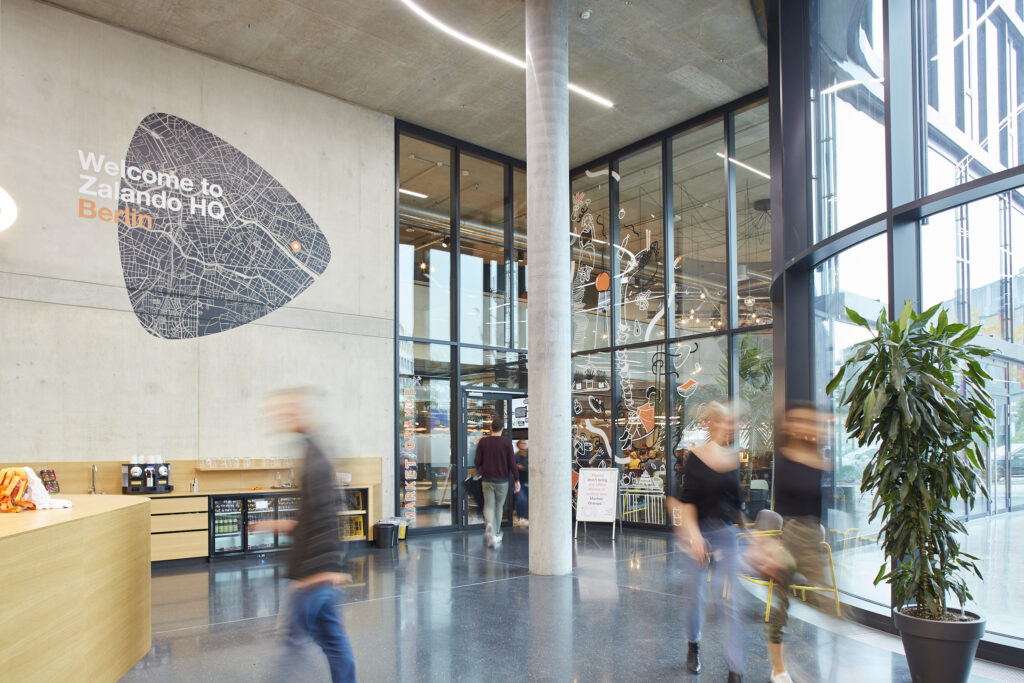Alejandro Basterrechea is an award winning procurement executive, early stage investor and advisor to procuretech startups. Presently serving as Director of Indirect Procurement at Europe’s leading online fashion and lifestyle retailer Zalando SE, Alejandro offers insight into why procurement should become a data and technology driven function. With reference to how Zalando alongside strategic partners such as Genpact are putting this into practise Alejandro offers the detail behind his beliefs.
Alejandro, tell us about your procurement journey?
I have more than 18 years of experience in different procurement roles across four different industries. I started as a Sourcing Manager for professional services in the semiconductor industry, where I learned the basics of strategic sourcing.
Afterwards, I moved to a sourcing expert role where I advised category managers on sourcing methodology by using eProcurement in the retail industry. Here I had the opportunity to start my digital journey in procurement and design, implement and roll out digital solutions across different categories.
After several years in wholesale retail, I took a role as a Head of Strategic Sourcing for Indirect Procurement at a Transportation & Aerospace company. We built up a shared service organisation from the ground up, where we could use technology and resources centralised there, to leverage data and information to support areas like negotiations, sourcing strategies and supplier profiles.
A few years ago, I had the opportunity to join Zalando, Europe’s largest online platform for fashion and lifestyle, and one of the fastest growing tech companies in Germany. As a digital company, it was expected that Procurement would provide user-centric tools and full digitised processes.

At the beginning, I was responsible for procurement excellence which included the design and digitization of our core processes (S2P, eSignature, Analytics,..). Here I had the opportunity to implement best in class solutions that helped us to become a true digital procurement organisation. Since then I have become passionate about the ProcureTech landscape, the possibilities we have today with technology in all areas of procurement and I’ve been an advocate for procurement to become a central unit of insights and data.
Click Below: view the magazine version of this content
Now, I lead the Indirect Procurement organisation where we put data and technology at the heart of our day to day activities.
Which role did data & technology play in your procurement career?
Today, data is one of the most valuable resources in the business world and procurement is sitting on a goldmine of data and information. There is probably no other function that has more access to data and information than procurement. This includes internal and external data such as transactions (e.g. POs, invoices), financial (e.g. budgets), supplier (e.g. contracts), market (e.g. market reports, commodity indexes), sustainability (e.g. risk, ESG reports,..).
However, there are two elements that played a key role in my career: (i) ability to collect data and information through tools and processes and (ii) ability to interpret the information out of those tools in an easy, accurate and digestible manner.
In my experience, the better the information and interpretation of data, the higher the probability of providing insightful advice for fact based decision making for our stakeholders or preparation to execute successful negotiations. This is a competitive advantage that procurement can provide to the business in managing their cost or managing commercial relationships with external parties.
Why a data-driven procurement organisation?
Having access, control and accuracy of data helps procurement to become the centre of information and insights within a company. A data driven procurement organisation puts procurement on a relevant position within a company for the decision making conversations with the business units.
In my experience, being a strong negotiator is a given and everybody expects that from a procurement organisation. However, being able to support and advise the business in taking difficult decisions based on accurate facts, this is a competitive advantage. Once stakeholders acknowledge that procurement brings additional value, then you will be involved in discussions where decisions are made, for example, budget planning, business cases, operational plans, functional strategies, etc..
The generation of value comes from putting all the pieces together and delivering information that is:
- Accurate: people trust the numbers
- Reliable: they are constantly and continuously accurate
- Automated: some effort to set up, low effort to maintain
- Efficient: fast, easy, no army of analyst needed
- Self explanatory: does not require a scientist to explain, any buyer can understand
- Accessible: easy to find, mobile, self service
- Insightful: looking beyond the surface, find the detailed information no one else sees
- Foresightful: looking beyond now, ability to predict or even prescribe
- Contextual: understanding the business environment of the information
Therefore, being a data drive organisation, puts procurement in a special role beyond sourcing, negotiations and contracting.
How do you build up a data-driven procurement organisation?
In order to build a data drive organisation, one should follow the following pillars:
Mindset: it starts at the top. Leaders must become data driven decision makers and ask the right questions by ensuring arguments are discussed based on knowledge, experience and of course, data. Having a data driven mindset will encourage the rest of the teams to become one as well.
Process: design and implement user centric processes that allow collection of information and data across the different subprocesses. This enables full transparency across the procurement process landscape.
Technology: in order to collect, process and interpret data, one needs to select the right technology. Technology enables procurement professionals to be able to work with accurate, reliable, fast, consolidated and efficient data. This allows buyers to focus on the analysis and interpretation of information, rather than collection and cleansing of data.
Content Sponsor – Genpact

People: in order to maximise the advantages of technology, you need to make sure that your organisation is enabled to apply it. The buyer of the 21st century requires additional skills on top of commercial acumen, negotiation skills, communication and stakeholder management. The ability to become an ambassador of a data driven mindset is essential to the competitive advantage that data and technology brings.
Upskilling the organisation in areas such as advanced analytics, use of digital technologies and interpretation of data (storylining) is now part of a buyer skillset.
Which data & technology trends do you see right now important for procurement organisations?
It all depends on the journey you are currently on. If you are at the beginning of the digital transformation, then establishing easy to use procure-to-pay solutions should be your utmost priority.
If you are on a mid-journey, enabling your teams with buyer centric source-to-contract and analytics tools, shall be at the centre of your strategy.
For any mature procurement organisation, the following areas are currently a priority::
- Process mining & automation for efficient transactions
- AI spend allocation for accurate and reliable data
- Advanced analytics for predictive and prescriptive analysis for decision making
- Risk management solutions for areas such as ESG, financial risk, cybersecurity
- Explore ChatGPT capabilities for procurement to gain additional insights faster
How did you select a technology partner and what do they bring as services?
When selecting a technology partner to support our digital journey, for us it was important to assess that the partner understands your current needs, maturity level and road ahead. In our case, we have a strong collaboration and partnership with Genpact, our data and technology provider in the areas of AI spend categorization and vendor risk management (e.g. ESG assessments, code of conduct; and risk and compliance checks).
Genpact brings the following capabilities: (1) scalability since during the digital journey, one will grow and mature, (2) adaptability since one needs might evolve or change over time (3) a wide range of digital capabilities, whether it is in data processing, advanced analytics, risk assessment, ESG and/or compliance checks and (4) data and digital security, especially in today’s cybersecurity environment (e.g. GDPR, DPA,..).
It is important to highlight that it is of utmost importance that both companies as well as service providers can handle data responsibly and ensure compliance to respective regulations.
Furthermore, it should have a forward-looking vision on how they want to develop their technology roadmap, bring innovation to the table and provide you with continuous support during the journey.
Any additional insights you would like to share with peers?
The big question everybody asks is “how to start”? I always answer with three answers: “start small”, “start now” and “scale up“.
Start small means, choose a process or an area of procurement that might not have the largest impact, but you can digitise with less effort and see some quick wins. Start now means, don’t wait for large initiatives or expensive roadmaps, but rather select something small that has been bothering you for a long time. Scale up means that once you start digitising the smaller things, rapidly you will get into the mindset of digitalization and soon it will not be a project but rather a continuous part of your organisational DNA.
Digitization of processes is probably the highest contributor in collecting, processing and analysing data, since technology supports transparency.
In my experience, it is easier to convince stakeholders on taking a certain direction in sourcing, when you bring a 360-degree view of their business based on reliable, accurate and interpreted data that enables them to take actions. This puts you at the forefront of decision making.
Today, there are enough solutions on the market, from large SaaS enterprises to ProcureTech startups or mature technology providers able to offer all different types of digital solutions across the complete procurement spectrum.
Finally, procurement’s future looks bright, but it depends on all procurement leaders to take the driving seat in executing the digital transformation to enable their teams and organisations to become co-pilots to the business and bring value through data and technology to their companies.

